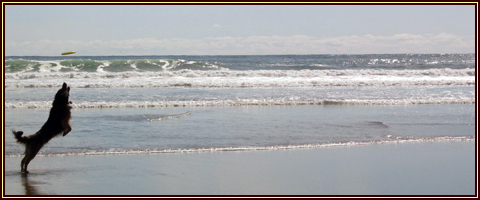Colic in Horses – Advice and Information
Confirmation of equine colic is a situation that worrries any horse lover. So what exactly is colic? What indicators should you be aware of?
Colic in horses refers to pain which stems from the abdomen. Generally horses do not tolerate pain of the abdomen well. So in the event of any disturbance of gut function they will usually show signs of discomfort.
Signs of discomfort could be stretching, standing as if to urinate, and hoofing the ground. If in great discomfort the horse will stand up and lie down, and roll to try to become more settled.
The horse will start sweating. More serious cases it will stand up and lie down and continuously roll.
What Should You Do?
If you think your horse has colic, it’s best to call an experienced equine vet immediately. The vet will be in a position to supply rapid pain relief and make a decision whether additional action is appropriate.
What should you do while waiting for the vet? Leading your horse for a walk sometimes helps. It can sometimes encourage his intestines to start working ina normal manner and soothe the discomfort. It may also further prevent the horse lying down and rolling. However if he is currently lying down peacefully then you should let him stay lying down.
It was thought that a horse could twist its gut by rolling around. That is probably incorrect. But it is best to stop him rolling if possible. This way you can stop your horse causing injury himself by knocking itself on any walls. But be careful that you don’t hurt yourself. Horses often lose all their manners if in pain.
There are several different reasons as to why horses get colic. But often the signs look the same regardless of what caused it.
So how will the vet look into the issue? They will listen to your horses abdomen with a stethoscope to show them whether there is more or less activity in the gut than there should be.
Monitoring the heart rate provides a good indication of the seriousness of the pain and the seriousness of the problem. Usually a horse with a normal heart rate does not have a serious problem. However a high heart rate is not such a good sign.
A very useful area of the examination is the rectal examination. By physically feeling the intestines, your vet could be able to find the root of the problem. It goes without saying that this is a very skilled procedure, that could be hazardous for both parties. Though for an experienced equine vet the information it gives is invaluable in concluding the cause of the issue. It may reveal a blockage, or a swollen gut loop as a result of a loop or another problem with the intestines.
In all but the simple cases the vet may inset a tube through the horses’ nose an into the stomach. Though it sounds unpleasant but often may make the horse more comfortable by lowering any pressure from the stomach. This process can also give the vet detailed feedback as to whether the stomach is emptying correctly.
Sometimes the horse might be so much distress that it is impossible for the vet to diagnose properly without first applying a dose of sedative.
Only by collecting all of the information revealed by a detailed examination is the vet able to make an initial diagnosis. Though it might not be possible to diagnose exactly what the problem is.
Sometimes, after the initial examination, your horse needs surgery. Though more usually the vet will decide to treat the horse with a short-acting painkiller and review his condition after a few hours. Most examples display a rapid improvement. Although others will either not respond to the treatment, or they will respond initially, only to start displaying signs of discomfort again later on.
In preference to having to bring the vet out multiple times, it is normally better to transport these cases to a specialist equine practice where they can be monitored closely and surgery can be performed if appropriate.
Conclusion
Thankfully most examples respond to medical intervention. But if surgery is needed – it is important to operate as soon as possible. The likelyhood of a successful outcome is far greater if the operation is performed before too much damage has occurred.
For more information, horses for sale and more, please visit the Horse and Pony Directory.







